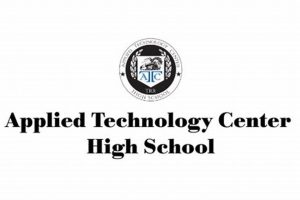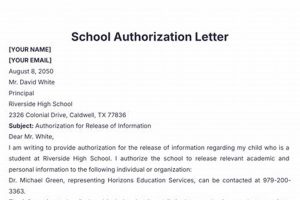Opening presentations, essays, or speeches effectively is crucial for student success. These initial moments, whether delivered orally or in writing, serve to capture the audience’s interest and establish the tone for the material that follows. A compelling introduction might employ a thought-provoking question, a startling statistic, a relevant anecdote, or a concise summary of the central theme. For instance, a presentation about the environmental impact of fast fashion might begin with a statistic about textile waste in landfills.
Strong introductory elements provide several benefits. They create a sense of anticipation and encourage engagement, making the audience more receptive to the information being presented. Effective introductions also enhance clarity by providing context and outlining the scope of the topic. Historically, rhetoric and oratory have emphasized the importance of captivating an audience from the outset, demonstrating the enduring relevance of this communication principle. From ancient Greek philosophers to modern-day TED talks, the power of a strong opening remains undeniable.
This exploration will delve deeper into various techniques students can employ to craft impactful introductions across diverse academic disciplines. Specific examples suitable for various presentation formats and subject matter will be examined, along with practical advice for tailoring these techniques to specific audiences and purposes.
Tips for Crafting Effective Introductions
The following tips offer practical strategies for crafting introductions that resonate with audiences and establish a strong foundation for any presentation or written work.
Tip 1: Start with a Compelling Question. A thought-provoking question immediately engages the audience and encourages active listening or reading. Example: “What if the very air we breathe became a commodity?”
Tip 2: Employ a Startling Statistic. A surprising statistic can grab attention and underscore the importance of the topic. Example: “Over 1 million plastic bottles are purchased every minute globally.”
Tip 3: Utilize a Relevant Anecdote. A brief, relatable story can create a personal connection and illustrate key concepts. Example: A historical anecdote about scientific discovery can engage an audience before discussing physics principles.
Tip 4: Offer a Concise Summary. Clearly outlining the core message at the outset provides context and direction for the audience. Example: Briefly state the main arguments of an essay in the introductory paragraph.
Tip 5: Use a Powerful Quotation. A relevant and impactful quote can add authority and intrigue. Example: Begin a presentation on perseverance with a quote from a historical figure known for overcoming adversity.
Tip 6: Create a Vivid Image. Descriptive language can paint a picture in the audience’s mind and evoke an emotional response. Example: Use evocative imagery to describe a setting before presenting an analysis of a literary work.
Tip 7: Present a Problem or Dilemma. Introducing a challenge can pique interest and create a need for the information that follows. Example: Describe a current social issue before presenting potential solutions.
Employing these strategies will significantly enhance the impact of presentations and written work, ensuring the audience remains engaged and receptive to the information presented.
By mastering these techniques, one can effectively capture attention and pave the way for a successful communication experience.
1. Relevance
Relevance serves as a cornerstone of effective communication, particularly when aiming to capture the attention of a high school audience. A relevant opening immediately establishes a connection between the listener or reader and the subject matter, signaling that the information presented will be meaningful and worthwhile. Without this initial connection, even the most creatively crafted introduction risks falling flat, failing to ignite curiosity or sustain engagement. Cause and effect are directly at play: a relevant introduction causes heightened attention and interest, which effects a greater receptiveness to the information that follows. A presentation about the dangers of distracted driving, for example, might begin with a statistic about teenage car accidents in the local area, immediately establishing the topic’s relevance to the audience’s lives.
As a critical component of effective introductions, relevance must be carefully considered. Understanding the audience’s existing knowledge, interests, and concerns is paramount. Tailoring the opening to resonate with these specific factors maximizes impact. For instance, a presentation on Shakespeare to a literature class might open with a discussion of a popular film adaptation, leveraging a familiar point of reference to bridge the gap to a potentially less familiar subject. Conversely, an introduction to a science project might begin with a real-world problem that the project aims to address, demonstrating the practical applications of the research. This careful consideration of relevance ensures that the introduction effectively prepares the audience for the content to follow.
In summary, relevance is not merely a desirable trait but an essential element of impactful introductions. It bridges the gap between the audience and the subject matter, creating a sense of purpose and piquing interest. By carefully considering the audience and tailoring the opening accordingly, speakers and writers can effectively leverage relevance to capture attention and lay the groundwork for a successful communication experience. Failing to establish this crucial connection risks losing the audience from the outset, highlighting the critical role relevance plays in effective communication.
2. Brevity
Brevity, in the context of capturing attention, is paramount, particularly for a high school audience. Limited attention spans necessitate concise and impactful introductory elements. Overly long introductions risk losing audience engagement before the core message is delivered. This section explores the facets of brevity and their impact on effective communication.
- Respect for Time
Valuing an audience’s time demonstrates respect and encourages reciprocal engagement. A concise introduction signals an understanding of this principle, suggesting that the speaker or writer values the audience’s attention. Imagine a student presentation beginning with a rambling, five-minute anecdote. Listeners are likely to disengage before the presentation’s core content is reached. Conversely, a succinct opening creates an impression of professionalism and consideration.
- Maintaining Focus
Brevity helps maintain audience focus by delivering the essential information without unnecessary digressions. A concise introduction establishes the topic clearly and efficiently, directing attention where it needs to be. Consider a research paper with a meandering introduction filled with tangential information. The reader may struggle to discern the paper’s central argument. In contrast, a brief, focused introduction immediately clarifies the purpose and scope of the research.
- Enhancing Impact
A concisely delivered message often holds greater impact. By stripping away unnecessary details, the core message becomes more potent and memorable. A powerful statistic or a thought-provoking question delivered succinctly can resonate more deeply than a lengthy explanation. Consider two speeches on climate change. One begins with a twenty-minute overview of climate science, while the other starts with a stark image of a melting glacier and a concise statement about its implications. The latter is more likely to capture immediate attention and leave a lasting impression.
- Creating Intrigue
A brief, intriguing opening can spark curiosity and encourage the audience to learn more. By offering a glimpse into the topic without revealing everything, the introduction creates a sense of anticipation. Imagine a novel that begins with a long, detailed description of the setting. The reader may become overwhelmed and lose interest. However, a brief, evocative opening scene can pique curiosity and draw the reader into the story.
In conclusion, brevity in introductions is essential for effectively engaging a high school audience. Respecting time, maintaining focus, enhancing impact, and creating intrigue all contribute to a more successful communication experience. These facets of brevity work in concert to capture and hold attention, setting the stage for a receptive audience and a more impactful message. By understanding and applying these principles, speakers and writers can craft introductions that resonate with their audience and effectively convey their message.
3. Originality
Originality in introductory material serves as a powerful tool for capturing and maintaining audience engagement, particularly within the high school environment. In a world saturated with information, a unique approach distinguishes presentations and written work, making them stand out from the predictable and mundane. This exploration delves into the facets of originality and their crucial role in crafting effective introductions for high school students.
- Avoiding the Clich
Clichd openings, while seemingly safe, often fail to capture attention and can even create a negative impression. Starting an essay with “In today’s society…” or a presentation with “Good morning, everyone. Today I’m going to talk about…” immediately signals a lack of originality. Instead, consider an unconventional approach. For example, instead of a generic opening for a presentation on cyberbullying, one might start with a short, anonymized social media post illustrating the issue, immediately grabbing attention and setting a distinct tone.
- Embracing Individual Voice
Originality stems from allowing one’s individual voice and perspective to shine through. This involves crafting introductions that reflect genuine interest and passion for the subject matter. A student passionate about environmental conservation might begin a presentation with a personal anecdote about a local environmental issue, making the topic relatable and demonstrating authentic engagement. This personal touch adds depth and credibility, fostering a stronger connection with the audience.
- Creative Integration of Supporting Material
Supporting material, such as statistics, quotations, or anecdotes, can be integrated creatively to enhance originality. Instead of simply presenting a statistic, consider weaving it into a compelling narrative or visual representation. For example, a presentation on global poverty could begin with a powerful image juxtaposing contrasting lifestyles, accompanied by a concise, impactful statistic about income inequality. This approach not only informs but also evokes emotion and stimulates critical thinking.
- Unconventional Presentation Formats
Exploring unconventional presentation formats offers opportunities for originality. Instead of a standard slide presentation, consider incorporating interactive elements, multimedia components, or even a short skit. A history project on ancient civilizations could incorporate a brief dramatic reenactment of a key historical event, creating a memorable and engaging experience for the audience. Such innovative approaches foster greater engagement and leave a lasting impact.
These facets of originality contribute significantly to the effectiveness of attention-getting devices in a high school setting. By avoiding clichs, embracing individual voices, creatively integrating supporting material, and exploring unconventional presentation formats, students can craft introductions that resonate with their audience and establish a strong foundation for their presentations and written work. The ability to capture and maintain attention through originality not only enhances the immediate impact of the work but also cultivates essential communication skills valuable beyond the classroom.
4. Engagement
Engagement represents a critical element in effective communication, particularly within the high school setting. Capturing and maintaining audience attention requires more than simply presenting information; it demands active participation and intellectual connection. This exploration delves into the facets of engagement and their crucial role in crafting effective introductory strategies.
- Interactive Elements
Incorporating interactive elements transforms passive listeners into active participants. Posing a question, incorporating a brief poll, or initiating a think-pair-share activity at the outset can immediately engage students and create a sense of shared exploration. For example, a presentation on renewable energy could begin with a quick poll asking students to identify their primary source of household energy, prompting reflection and fostering a personal connection to the topic. This approach stimulates interest and encourages continued participation throughout the presentation or lesson.
- Emotional Connection
Establishing an emotional connection with the audience significantly enhances engagement. Introductions that evoke curiosity, empathy, or even humor create a more memorable and impactful experience. A presentation on animal welfare might begin with a poignant image or a brief anecdote about a rescued animal, creating an emotional resonance that motivates audience interest and encourages further exploration of the topic. This emotional investment fosters deeper understanding and retention of information.
- Relevance and Personalization
Connecting the subject matter to students’ lives and experiences fosters a sense of relevance and encourages active listening. Relating the topic to current events, popular culture, or students’ personal interests creates a bridge between the familiar and the new. For example, a lesson on statistical analysis could begin with a discussion of how statistics are used in sports analytics, a topic likely to resonate with many high school students. This personalization enhances engagement and promotes deeper understanding of abstract concepts.
- Variety and Pacing
Varying the delivery method and pacing of the introduction helps maintain audience attention and prevents monotony. Incorporating visuals, audio clips, or short videos can break up lengthy explanations and cater to different learning styles. A presentation on the solar system could begin with a captivating video showcasing the planets, followed by a concise overview of the topic. This varied approach maintains engagement and caters to diverse learning preferences, ensuring continued attention throughout the presentation.
These facets of engagement are essential for crafting effective introductions that capture and maintain audience attention in the high school environment. By incorporating interactive elements, establishing emotional connections, ensuring relevance and personalization, and utilizing varied pacing and delivery methods, educators and students can create impactful introductions that foster active participation, enhance learning, and promote deeper understanding of the subject matter. These strategies not only improve the immediate effectiveness of presentations and lessons but also cultivate essential communication and critical thinking skills valuable beyond the classroom.
5. Clarity
Clarity stands as a cornerstone of effective communication, particularly crucial when crafting introductions intended to capture the attention of high school students. A clear and concise opening establishes a strong foundation for understanding, ensuring the audience can readily grasp the core message. This initial clarity acts as a catalyst, enabling subsequent information to be processed and assimilated effectively. Without this foundational clarity, even the most engaging introduction risks losing its impact, as confusion and ambiguity can quickly erode audience attention and hinder comprehension. Cause and effect are directly linked: clarity in an introduction causes increased comprehension and engagement, which effects greater receptivity to the presented material. A science presentation, for example, benefits from clearly defined terminology and a concise explanation of the experiment’s purpose within the introduction. This initial clarity paves the way for a more thorough understanding of the subsequent findings.
Clarity’s importance as a core component of successful introductions cannot be overstated. It acts as a guiding light, directing the audience’s focus and preventing cognitive overload. Consider the difference between a history presentation that begins with a convoluted historical anecdote and one that starts with a clear statement of the historical period and key figures involved. The latter approach allows the audience to contextualize the subsequent information more effectively. Clarity ensures that the introduction serves its intended purpose: to prepare the audience for the information that follows, not to create confusion or ambiguity. This principle applies equally to written and oral presentations across various subjects.
In summary, clarity is not merely a desirable trait but an essential element for crafting effective introductions. It forms the bedrock upon which understanding is built, enabling the audience to engage with the material more effectively. By prioritizing clarity in introductions, speakers and writers can ensure their messages are received, processed, and understood, maximizing the impact of their communication. The absence of clarity, conversely, can lead to disengagement and diminished comprehension, underscoring its fundamental role in impactful communication. This understanding translates into practical application across academic disciplines, equipping high school students with a valuable tool for effective communication in all its forms.
6. Appropriateness
Appropriateness serves as a critical filter for all communication, especially within the high school environment. While capturing attention is essential, it must never come at the expense of decorum and respect. Understanding the specific audience and context dictates which introductory strategies are suitable. Cause and effect are intertwined: appropriate choices cause positive audience reception and trust, effecting a more impactful communication experience. An inappropriate joke or an overly dramatic anecdote, for instance, can alienate the audience and undermine the speaker’s or writer’s credibility. Conversely, a thoughtful, relevant opening demonstrates respect and fosters a receptive environment for the information that follows. A presentation on a serious topic like mental health, for example, requires a sensitive and respectful approach. Starting with a lighthearted joke would be inappropriate, whereas a sensitive statistic or a relevant quote might be suitable.
Appropriateness functions as a crucial component of effective attention-getting techniques in high school. It ensures that the pursuit of engagement does not overshadow the importance of respect, sensitivity, and academic integrity. Consider the contrast between a student beginning a history presentation with a historically inaccurate, sensationalized story versus one who opens with a thoughtfully chosen primary source quote. The latter approach demonstrates both academic rigor and respect for the subject matter. Navigating appropriateness often involves considering cultural sensitivities, avoiding potentially offensive material, and aligning the tone of the introduction with the overall purpose of the communication. Practical applications of this understanding range from choosing appropriate visuals for a presentation to selecting suitable language for a formal essay.
In summary, appropriateness is not merely a constraint but a crucial guiding principle for effective communication in the high school setting. It ensures that the pursuit of audience attention aligns with ethical considerations and academic standards. Challenges may arise in navigating nuanced contexts or diverse audiences, but prioritizing appropriateness ultimately strengthens communication by fostering trust and respect. This understanding equips students with the discernment necessary to make informed choices about introductory strategies, contributing to more impactful and meaningful communication experiences.
Frequently Asked Questions
This section addresses common inquiries regarding effective introductory techniques in a high school setting. The goal is to provide clear and concise answers that offer practical guidance for students and educators.
Question 1: How can one avoid sounding clichd when trying to capture attention?
Clichs can be avoided by focusing on originality and authenticity. Instead of relying on overused phrases or generic statements, consider incorporating personal anecdotes, relevant statistics presented in a unique way, or thought-provoking questions tailored to the specific topic. Drawing on one’s own perspective and voice helps create a more genuine and engaging introduction.
Question 2: What is the ideal length for an effective introduction?
The ideal length depends on the overall length of the presentation or written piece. Generally, an introduction should be concise and focused, avoiding unnecessary digressions. For a short presentation, a brief opening of one to two minutes might suffice, while a longer research paper might require a more substantial introduction of several paragraphs. The key is to provide sufficient context without overwhelming the audience.
Question 3: How can introductory techniques be adapted for different subjects?
Adaptability is key. A historical presentation might benefit from a relevant historical anecdote, while a scientific presentation might begin with a compelling scientific question or a surprising statistic. The chosen technique should align with the subject matter and the overall tone of the presentation or paper.
Question 4: What are some effective strategies for overcoming nervousness when delivering an introduction?
Preparation and practice are essential for managing nervousness. Rehearsing the introduction multiple times, visualizing a successful delivery, and focusing on the key message can help reduce anxiety. Deep breathing exercises and maintaining eye contact with friendly faces in the audience can also help project confidence.
Question 5: How can one ensure an introduction is appropriate for the audience and context?
Careful consideration of the audience’s demographics, cultural background, and expectations is essential. Avoiding potentially sensitive or controversial topics and maintaining a respectful tone are crucial. Seeking feedback from peers or educators can also provide valuable insights into the appropriateness of an introduction.
Question 6: What is the most important element of an effective introduction?
While all elements discussed contribute to effectiveness, clarity is paramount. A clear and concise introduction ensures the audience understands the purpose and scope of the presentation or written work. Clarity provides a strong foundation for engagement and comprehension, allowing subsequent information to be processed effectively.
By understanding and applying these principles, students can craft introductions that effectively capture attention, establish credibility, and pave the way for successful communication experiences.
This concludes the FAQ section. The following section will provide further insights into practical applications of these techniques.
Conclusion
Effective introductory techniques in high school settings are crucial for successful communication. This exploration has highlighted the importance of relevance, brevity, originality, engagement, clarity, and appropriateness in crafting compelling introductions. From capturing audience attention to establishing a foundation for understanding, these elements play a vital role in both written and oral presentations across various disciplines. Mastering these techniques empowers students to communicate effectively, fostering critical thinking and enhancing academic success.
The ability to craft compelling introductions is a skill that extends beyond the classroom. It equips individuals with the tools necessary to engage audiences, convey information effectively, and achieve communicative goals in diverse contexts. As students transition into higher education and professional environments, the ability to capture and maintain attention becomes increasingly vital. Cultivating these skills in high school provides a significant advantage, fostering confident and effective communicators prepared to succeed in a complex world.







